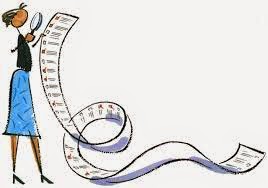One of the more common postural distortions is called,
“Stooped Posture”.
This is a general
term for a posture that primarily results in a pain that wraps around the lower
and mid back but also includes compression of the disks in the lower (or,
Lumbar) spine, very tight hamstrings and foot/ankle/knee problems. In some cases, the head may also need to move
forward (due to the abdominals pulling the ribcage downward); causing what is
termed “forward head posture”.
Neuromuscular Therapy or, NMT, is a wonderful mode of
Massage that aides the body in correcting its posture. Basically, through targeting specific areas
that are causing the postural distortion, NMT loosens the muscles and surrounding
tissues, so that the body can move itself back into its proper alignment.
Almost every person has something they could improve upon in
their posture. Such distortions can
occur for a number of reasons such as the type of work they do, exercising
improperly, non-ergonomic work stations (i.e.: computer desk/chair heights and
angles) and even our emotions. Emotions
can cause us to distort our posture.
Such as, when we are nervous or sad, most people hold their arms around
their stomach and curl inward. Over
time, without realizing this, their bodies become “locked” into this new
posture. Any of the above named factors
can cause the body to “lock” into a postural distortion. What results from this is a number of counter
balancing acts throughout the body.
The human body is set up in such a way to allow for it to
move through gravity with the least resistance and proper balance. If one side of the body is pushed forward,
then the other side must move back to balance the body out. Think of the body like a set of building
blocks.
You will find that a number of muscles contribute to locking
the body into a “Stooped Position”.
We're going to focus on the torso and down. Muscles from the foot, ankle and the hamstrings of the
thigh will pull together causing the knees to bend forward and the foot to be
in a constant plantar-flexed position (standing on tip-toes).
What we will find happens when the muscles on one side of
the leg are constantly flexed; the other side is over lengthened. When a muscle stretches too far, it becomes
weak, and therefore painful. So what
will need to take place in this instance is that the locked down muscles in the
back of the leg need to be released, so to allow the muscles on the front of
the leg to heal and return to a neutral length.
Tight hamstrings will pull on the pelvis, causing it to tilt
to the rear of the body. Once this
occurs, the lower (Lumbar) spine (as seen below) will lose its natural curve,
and could result in compression of the discs that lie between the vertebrae. The entire spine can eventually straighten,
losing its flexibility and stiffening.
When this happens, the abdominal muscles are given the chance to shorten
and lock into the shortened position.
This over elongates the muscles of the back, just like in the legs. So, pain will be felt in the back due to the
over stretched and weak muscles. The muscle in the center of the abdomen, Rectus Abdominis’
main action is to bend (flex) the body at the waist, so allowing this muscle to
tighten down harder than normal will definitely lead to overstretching those
back muscles. Most people will feel a
strap-like pain across the low and mid back if the abdominals are involved.
____________________________________________________
About the Author:
 Lisa Rebaglia is a married mother of twin girls. Her husband is a T 12 paraplegic, and is the reason she became a massage therapist in 2008. She is a Licensed Massage Therapist in North Carolina #07809. She is skilled in Neuromuscular Massage Therapy, Swedish, Reiki, Thai, Hot Stone, Chair, and Sports Massage. Lisa takes an all-encompassing approach to massage, incorporating fitness, proper nutrition, and massage to allow the body to heal itself. You can follow Lisa on Facebook, Check out her Company Facebook here, Follow on Twitter.
Lisa Rebaglia is a married mother of twin girls. Her husband is a T 12 paraplegic, and is the reason she became a massage therapist in 2008. She is a Licensed Massage Therapist in North Carolina #07809. She is skilled in Neuromuscular Massage Therapy, Swedish, Reiki, Thai, Hot Stone, Chair, and Sports Massage. Lisa takes an all-encompassing approach to massage, incorporating fitness, proper nutrition, and massage to allow the body to heal itself. You can follow Lisa on Facebook, Check out her Company Facebook here, Follow on Twitter.










